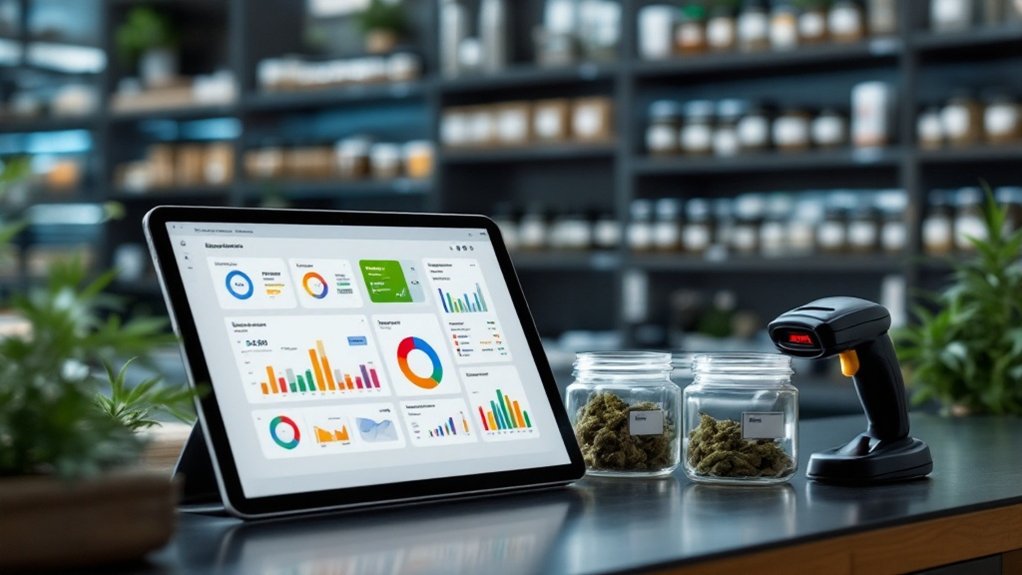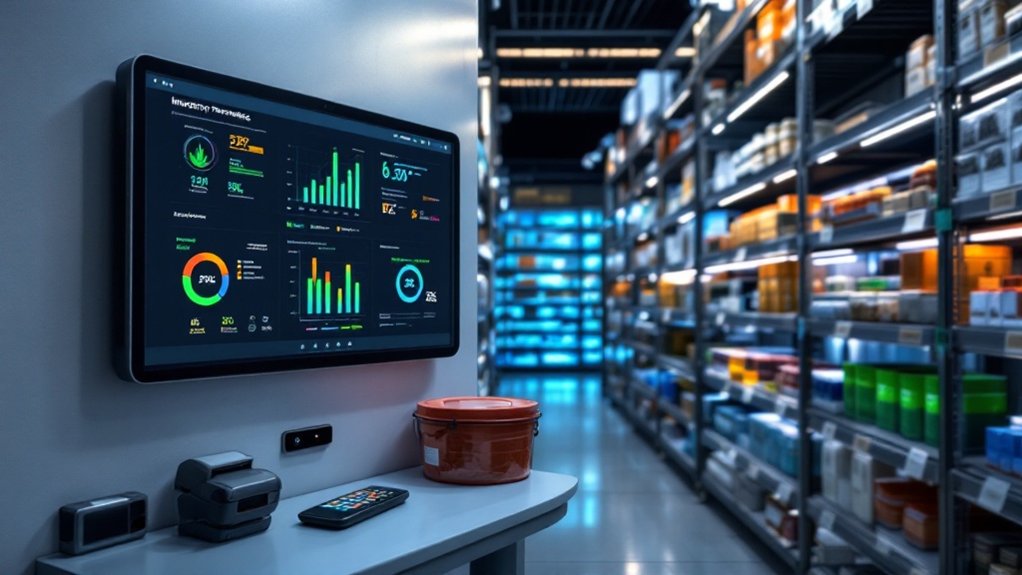Cannabis inventory management software will be essential in 2025 as the industry expands to a projected $6.65 billion market. These systems automate regulatory compliance, prevent costly violations, and optimize operational efficiency through seed-to-sale tracking. Cloud-based solutions offer scalability for growing businesses while providing robust security features to protect valuable inventory. Advanced analytics and real-time monitoring capabilities help cannabis operators navigate complex regulations while maximizing profitability in an increasingly competitive marketplace.

Every segment of the rapidly growing cannabis industry now relies on specialized software solutions to navigate an increasingly complex regulatory landscape. With the cannabis industry software market projected to reach $6.65 billion by 2030, up from $807 million in 2022, technology adoption is becoming increasingly vital for operational viability. This exponential growth reflects the essential nature of digital tools in managing the unique challenges faced by cannabis enterprises, particularly in inventory tracking and compliance reporting.
Technology has become the backbone of cannabis operations as regulatory complexity requires digital solutions for survival and growth.
The regulatory framework governing cannabis continues to evolve rapidly across jurisdictions, creating a labyrinth of compliance requirements that cannot be efficiently managed through manual processes. Cannabis inventory management software provides automated regulatory reporting capabilities that considerably reduce the risk of non-compliance penalties and potential business disruption. This technology enables the seed-to-sale traceability that regulatory bodies increasingly demand, offering thorough audit trails that prove invaluable during inspections.
Operational efficiency represents another compelling driver for software adoption in the cannabis sector. Cultivation management software, which currently holds the largest market share in the cannabis software ecosystem, optimizes growing conditions and resource allocation throughout the production cycle. Meanwhile, retail point-of-sale systems—projected to reach $1.52 billion by the end of 2025—integrate seamlessly with inventory controls to prevent stockouts and overstock situations that can impact profitability. The growing implementation of POS systems in dispensaries is driving market growth as businesses seek effective management solutions. The Medical segment dominates the market with the largest market share due to extensive software adoption in dispensaries and medical cannabis facilities.
Cloud-based deployment models dominate the cannabis software landscape, offering scalability that traditional systems cannot match. This flexibility allows cannabis businesses to adapt quickly as they expand operations or enter new markets with different regulatory requirements. The ability to access inventory data remotely proves particularly valuable for multi-location operators managing distributed supply chains across different jurisdictions.
Security features embedded in modern cannabis inventory systems provide essential risk mitigation capabilities. Real-time monitoring enables immediate detection of discrepancies or potential diversion, while advanced permission controls reduce the risk of internal theft or unauthorized access. These security protocols not only protect valuable inventory but also maintain data integrity for compliance reporting.
As North America continues to lead in cannabis software adoption, emerging markets in Europe and Asia-Pacific regions demonstrate increasing demand as legalization efforts advance globally. This geographic expansion parallels the increasing sophistication of cannabis inventory management tools, which now incorporate predictive analytics and real-time monitoring capabilities that transform raw data into actionable business intelligence.
Frequently Asked Questions
How Long Does Implementation of Cannabis Inventory Software Typically Take?
Cannabis inventory software implementation typically takes 4-8 weeks for small to medium operations, while larger enterprises may require 8-12 weeks.
The process involves four key phases: vendor selection, system configuration and data migration, integration with state track-and-trace platforms, and staff training.
Implementation timelines are heavily influenced by regulatory deadlines, business scale, inventory complexity, existing infrastructure compatibility, and vendor support quality.
Cannabis businesses must align their implementation schedule with state-mandated compliance dates.
Can Employees Access Inventory Software Remotely From Mobile Devices?
Modern cannabis inventory management software offers robust remote access capabilities for employees. Staff can utilize mobile applications on iOS and Android devices to perform essential inventory functions including barcode scanning, stock updates, and compliance verification from anywhere with an internet connection.
These systems employ security measures like multi-factor authentication and role-based permissions to maintain data integrity while providing real-time visibility across operations. The mobile functionality enables teams to conduct inventory checks, manage supply chains, and respond to compliance requirements without being physically present at the facility.
What Security Features Protect Sensitive Cannabis Inventory Data?
Modern cannabis inventory management systems employ multi-layered security approaches to protect sensitive data.
End-to-end encryption safeguards information during transfer and storage, while role-based access controls restrict data viewing to authorized personnel only.
SSL protocols secure web interfaces, and MFA provides additional login protection.
Physical security integrations include surveillance cameras and biometric authentication.
Thorough audit trails, coupled with automated alerts for suspicious activities, guarantee regulatory compliance while maintaining detailed records of all inventory movements.
How Does Inventory Software Integrate With Existing POS Systems?
Modern cannabis inventory software integrates with POS systems through API connections that enable real-time data synchronization.
These integrations allow for automatic updating of inventory counts when sales occur, seamless transfer of product information, and unified compliance reporting.
Most systems use standardized protocols to connect with popular cannabis POS platforms, supporting features like barcode scanning, RFID tracking, and automated purchase limit enforcement.
This integration creates a cohesive ecosystem that reduces manual data entry and improves operational efficiency.
Are There Industry-Specific Compliance Reports Automatically Generated?
Modern cannabis management software automatically generates industry-specific compliance reports required by state regulatory agencies.
These systems produce thorough documentation including harvest batch reports, sales summaries, and testing results that satisfy Metrc and other track-and-trace requirements.
The software formats data according to each jurisdiction’s specific regulatory frameworks, automatically flagging potential compliance issues.
This automation greatly reduces the administrative burden on businesses while ensuring adherence to complex regulatory requirements across different operational stages.








